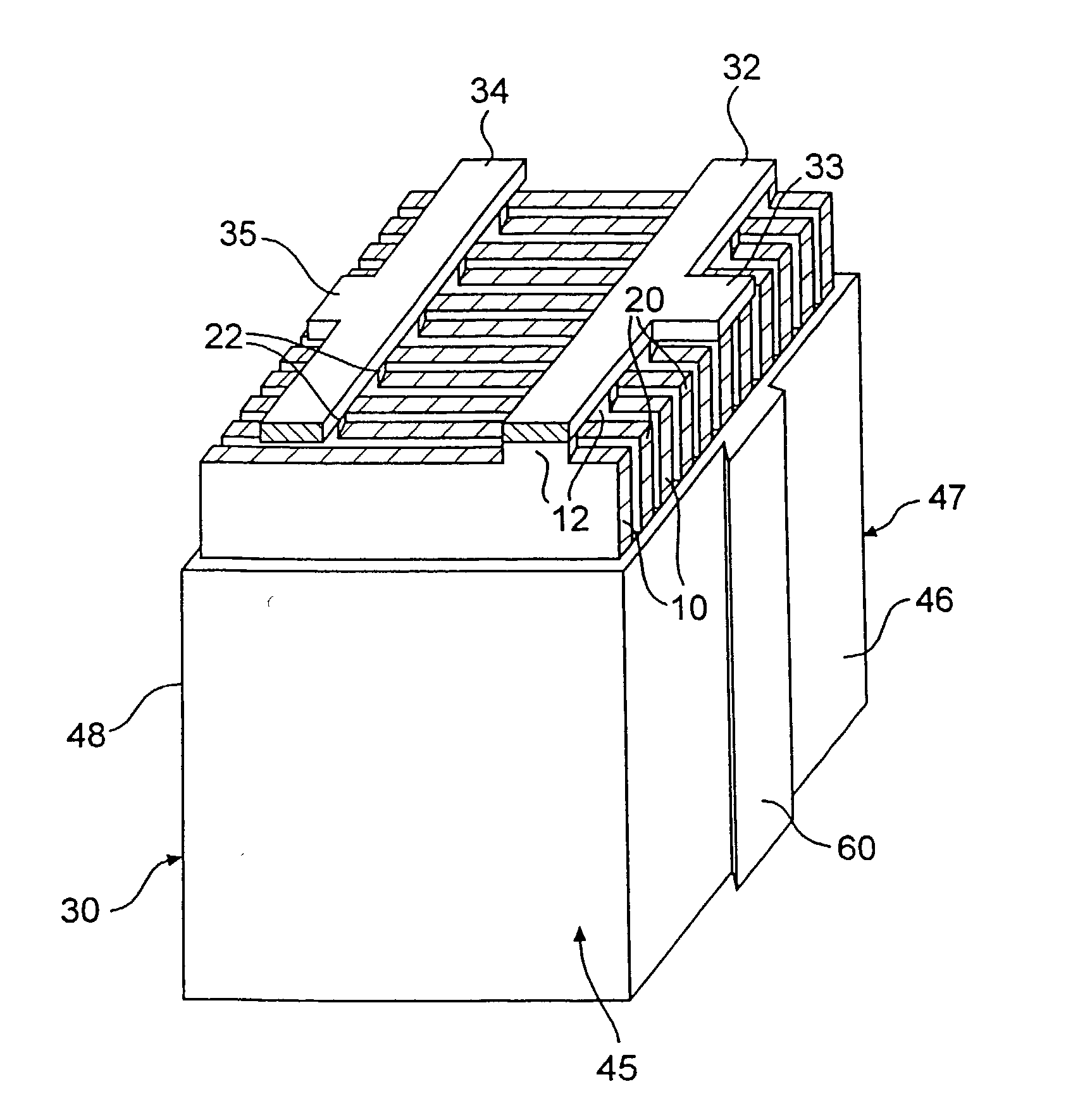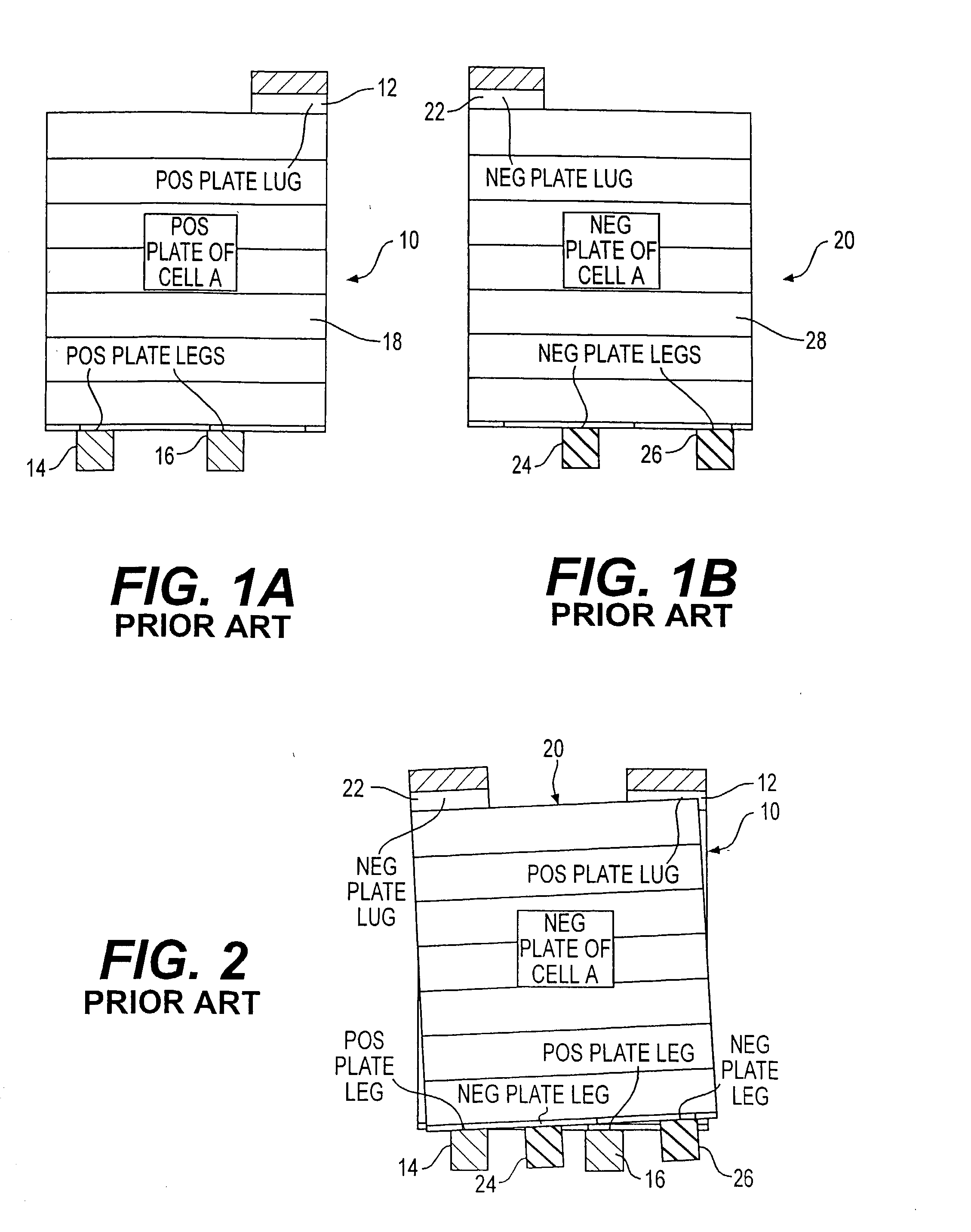Multi-cellular electrical battery
a multi-cellular, electrical battery technology, applied in the field of electric batteries, can solve the problems of increasing the manufacturing cost of batteries, gas bubble formation on electrodes, and build-up of electrolyte impurities
- Summary
- Abstract
- Description
- Claims
- Application Information
AI Technical Summary
Benefits of technology
Problems solved by technology
Method used
Image
Examples
Embodiment Construction
[0042] A lead acid storage battery most suitably exemplifies the principles of the present invention. It should be noted, however, that the inventive aspects of the present invention may apply to any multi-cellular electrical battery including secondary batteries, primary batteries and fuel cells.
[0043] Typically, a lead acid battery is composed of a number of distinct electrolytic cells, each of which is composed of an equal number of paired positive and negative battery plates immersed in an electrolyte solution. In the most common arrangement, positive plates of lead peroxide and negative plates of spongy lead are immersed in an electrolyte solution of sulfuric acid. Preferably, the battery according to the present invention has electrodes with a plate substrate (sometimes also called a grid or expanded metal mesh) that is a solid or porous sheet of a material consisting of lead, alloyed with small amounts of calcium, tin and silver. The plate substrate material may be mixed with...
PUM
 Login to View More
Login to View More Abstract
Description
Claims
Application Information
 Login to View More
Login to View More - R&D
- Intellectual Property
- Life Sciences
- Materials
- Tech Scout
- Unparalleled Data Quality
- Higher Quality Content
- 60% Fewer Hallucinations
Browse by: Latest US Patents, China's latest patents, Technical Efficacy Thesaurus, Application Domain, Technology Topic, Popular Technical Reports.
© 2025 PatSnap. All rights reserved.Legal|Privacy policy|Modern Slavery Act Transparency Statement|Sitemap|About US| Contact US: help@patsnap.com



